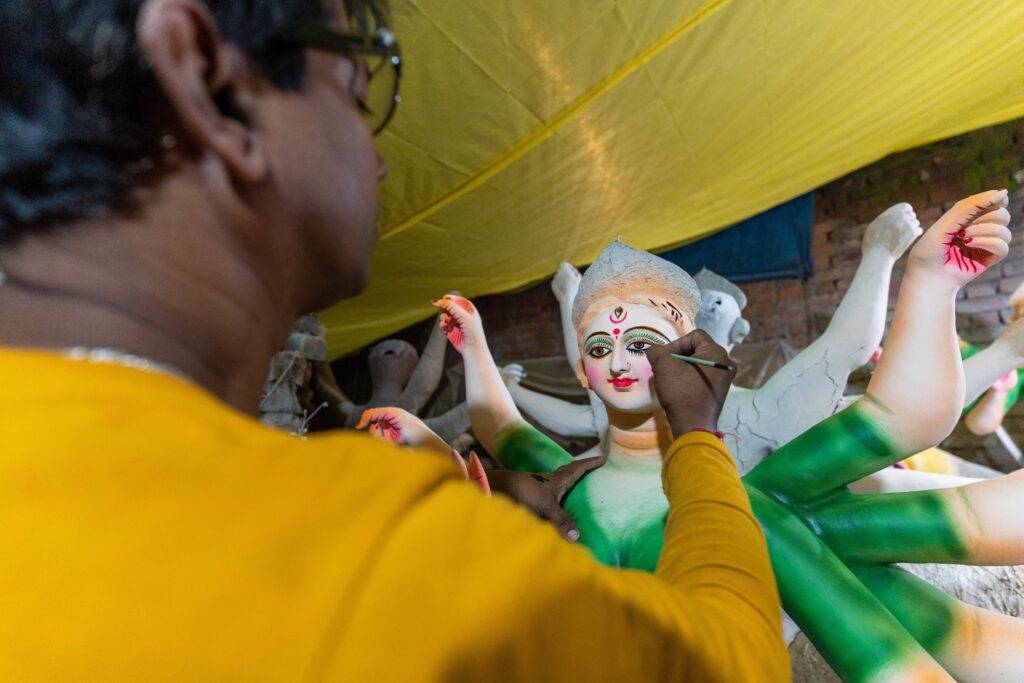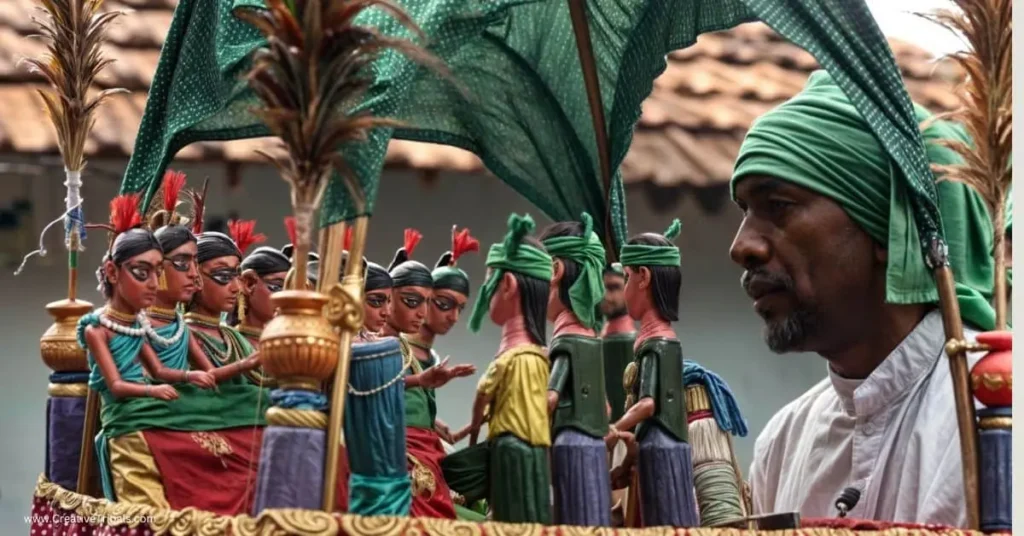Seraikela Chhau Dance
Seraikela Chhau Dance : Chhau dance of Seraikela district of Jharkhand is one of the most ancient and rich dance forms of India. The dance is known for its distinctive masks, energetic dance style and dance performances based on religious and mythological themes.
Seraikela Chhau dance is a mask dance. Dancers dance wearing masks. Masks are used to make the dancer’s expressions more visible and effective. The masks used in Seraikela Chhau dance are made of wood or clay and are decorated with a variety of colors. Seraikela Chhau dance is an energetic dance style. In this dance the dancers perform various types of dance movements using their hands and feet. Dancers also often use a variety of war weapons in the Seraikela Chhau dance.
Saraikela ‘Chhau’ dance is based on the principles of ‘Bharatanatyam’, its form is in keeping with Indian cultural traditions, and its practices are similar to the particular dance traditions of India. ‘Chhau’ dance incorporates all aspects of the three elements of Indian dance forms, Natya, Nritta, and Nritya.
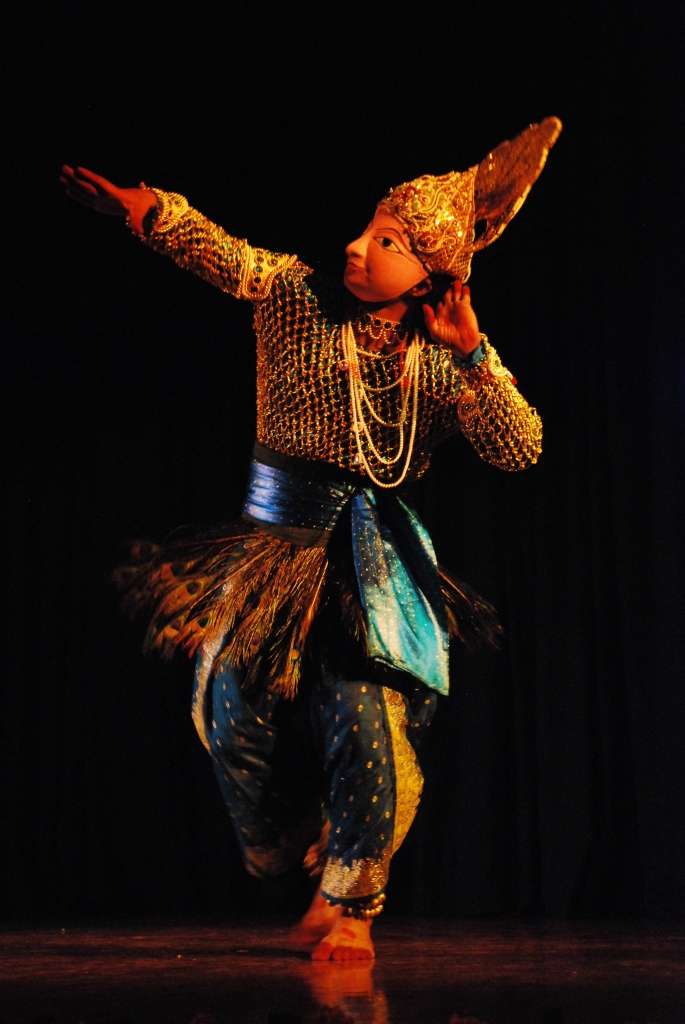
Like in ‘Bharatanatyam’, in ‘Chhau’ also certain rules are followed to promote performance. It includes proper arrangements for musical instruments, designated spaces for performers, the official start of music, rules for operating musical instruments, and special rules for coordinating various percussion instruments such as the ‘God Prayer’.
Although there is a clear difference in performance style in ‘Chhau’ due to the use of masks, the use of vocal music is unlikely due to the masks. Therefore synchronization with the instrumental music and rhythm patterns becomes important. Mudras (hand signs) are appropriate for conveying emotions, and form part of the physical expression of physical emotions in ‘nritta’.
In ‘Chhau’ the use of facial expressions and eye movements to convey emotions is limited due to the masks, and the focus is on footwork and physical emotions. It focuses primarily on hands and hand signs, which deviate from the expectations of the classical tradition.
Despite these differences, the source of inspiration for ‘Chhau’ dance comes from Indian culture, and its original roots are deeply connected to the oldest Indian art form. It is believed that the influence of Shankaracharya played an important role in its development. The dance begins with the ‘Yatrighata’, in which the bearer, considered sacred, wears red robes and has a colorful face. ‘Yatra’ follows him, in which the bearers dance, and ‘Kalikaghat’ is another character who wears black clothes and applies vermillion (saffron) on his forehead, and he dances in a fierce manner.
The ‘Chhau’ dance has a constant meditative and spiritual aspect, This dance reveals various mythological and religious stories through dance presentation. Some major themes in ‘Chhau’ dance include:
- Duryodhana-Arjuna War Dance: Shows the battle between Duryodhana and Arjuna of Mahabharata.
- Kaliya-Daman Dance: Depicts the story of Lord Krishna subduing the serpent Kaliya in the river Yamuna.
- Kach-Devayani Dance: Describes the story of Devyani, daughter of Saint Kach and King Shukracharya.
- Madhu-Kaitabha Dance: Shows the battle between Lord Vishnu and the demons Madhu and Kaitabha.
- Mahishasura Slaughter Dance: Depicts Goddess Durga’s victory over the demon Mahishasura.
- Vasuki Garuda Dance: Depicts the legend of Lord Vishnu pacifying the serpent Vasuki using Garuda.
- Samudra-Manthan Dance: Depicts the churning of the ocean by gods and demons to obtain nectar.
- Dashavatara Dance: Depicts the ten incarnations of Lord Vishnu.
- Shiva-Parvati Dance: Shows the harmonious love and devotion between Lord Shiva and Goddess Parvati.
- Surya Namaskar Dance: Refers to a dance that salutes the Sun in dedication to the Sun God.
These themes are deeply rooted in Hindu mythological and spiritual stories, and the ‘Chhau’ dance serves as a medium to communicate the stories and their moral and spiritual significance.


From the style point of view, ‘Chhau’ dance gives importance to yogic and spiritual aspects. It focuses on the union of the soul with the divine, and is seen as a result of the silent effort of the performer and union with time. While other classical dance forms place emphasis on vocal and facial expression, ‘Chhau’ relies on the physicality and inner emotions of the dancer to convey the core essence of the story through lyricism and inner emotions.
The ‘Chhau’ style of dance is predominantly heroic, focusing on the epic aspect. It is more in line with Shaivite traditions and focuses on more yogic aspects rather than Vaishnavite traditions. Bhakti and yoga are common components in both forms, but in ‘Chhau’ dance the emphasis is more on the yogic aspect of yogic practice, where the practitioner meets the divine through the physical body.
One specialty of ‘Chhau’ dance is that everyone from the king’s son to the village people, like Harijans and Brahmins dance here. There is no discrimination in this. In every kingdom that was ruled by a king, it was required that all the people of the king or his subjects learn martial arts. The invocation of Chowk is also said here. In this, the musical part, which also includes Shiva Tandava composed by Ravana, is an important part of the dance.
‘Chhau’ dance performances follow classical principles and have a special arrangement. The dance area, called ‘Natya Shala’, is square and surrounded by a circle. There are designated areas for female dancers and special seats for guests. The placement of musical instruments and the coordination between dance steps and musical instruments are critical to the success of the performance.
‘Chhau’ dance emphasizes the importance of folk dance and natural movements. It has a sense of joy for the common people and is constantly evolving. It includes elements of religion, society, and nature, making it a comprehensive art form. The ‘Chhau’ dance often continues late into the night and is performed for several days. Therefore, its main focus is on audience enjoyment.
Origin of Seraikela Chhau dance
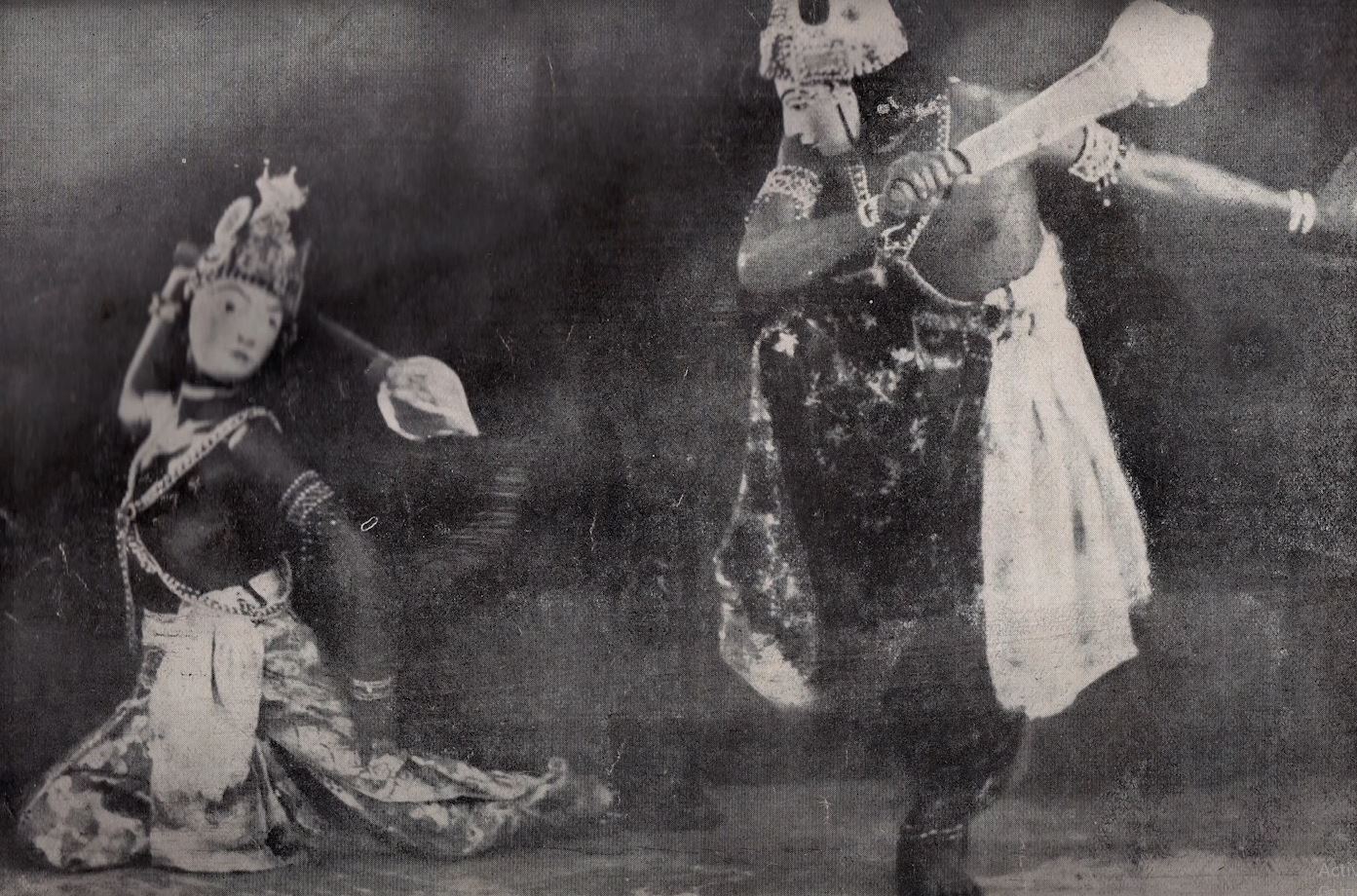

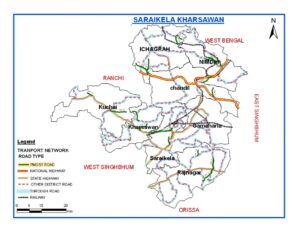

There are several theories about the origin of the Seraikela Chhau dance. Some scholars believe that this dance originated from India’s ancient war skill ‘Parakhanda’, while other scholars believe that this dance originated from India’s ancient religious rituals.
Seraikela maintained its independent state structure till 1650 BC. The local culture of this region is full of certain characteristics. Local languages are Kurmali, Ho, Santhali etc. Apart from this, people in this region located near Jharkhand, near Orissa and Bengal speak Odia, Bengali and Hindi. As a result, people here speak several languages simultaneously and their festivals also reflect each other’s influence. Among the non-tribal population here, the tribal goddess ‘Maa-Gauri’ is worshipped. Therefore, there is diversity in the local culture here and this diversity is also reflected in the ‘Chhau’ dance.
It is clear that ‘Chhau’ dance has evolved from the local lifestyle of this region. This dance has been an important part of the forested hilly areas of Seraikela since ancient times. The inspiration for tribal dances comes from instinct itself and there is a natural simplicity in these dances, which has escaped understanding the depths of classical art. This is the reason why ‘Chhau’ dance follows both folk and classical ideals simultaneously. The specialty of this dance in folk dance is that it emphasizes physical movements and movements, even though it tries to avoid excessive use of choreography. Besides, the postures and postures of Indian choreography are also used in the dance here. With the combination of these two trends, ‘Chhau’ dance has not only been updated classically, but has also saved the tradition of folk dances.
It is said that ‘Chhau’ dance originated in Porahat state of Seraikela. Raja Shri Chhatradhari Singh of Simha dynasty situated in Singhbhoomi district of Porahat state was killed by ‘Ho’ people, and that is why Porahat Raja Shri Ranjit Singh had abdicated his throne and decided to flee. Ranjit Singh, who came to Delhi from Jodhpur, was a horseman, and due to his horsemanship skills, Akbar gave him shelter in his camp. After a few days, he became a favorite of King Mansingh. Then, when Raja Mansingh decided to proceed to conquer Bengal, Ranjit Singh accompanied him and made an agreement with Raja Ramchandra of Bengal and took over the throne of Porahat around 1560 AD.
It is said that at that time, Raja Mansingh’s camp was in Singhbhoomi area for some time, and his fellow soldiers felt the need of entertainment by watching various folk dances of the wildlife there. Following the suggestion of Shri Ranjit Singh, the army leader organized a dance ceremony in the cantonment to relieve fatigue and for entertainment.
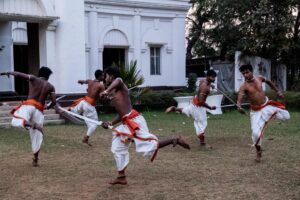

In a military environment, military heroes were hesitant to dance, but the feeling of entertainment was also deep. To overcome this hesitation, it was decided that each actor would wear a face covering to hide his individuality. For this, clay figures made in the form of warriors were used, through which the feudal chief actors of the cantonment performed Khanda-Nritya (sang dance) in the form of a duel with swords under the guidance of Shri Ranjit Singh.
After leaving the cantonment, Shri Ranjit Singh made this Khanda dance a part of the state annual function at Porahat. Additionally, he developed and improved various relevant sequences of it.
The last king of Porahat was Maharaja Arjun Singh, and the tradition of Khanda dance continued till his reign. During the First War of Independence in 1857, Maharaj Kunwar Singh in Jharkhand rebelled and declared independence against the British, leading to the fall of the Porhat state and Maharaj Arjun Singh being exiled to Banaras by the British.
He died there in 1860. Maharaj Arjun Singh was a freedom lover and a skilled ruler as well as a lover of learning and art. He presented Khanda dance as a religious event and also made it a means of his military welfare.
In the 17th century, Raja Sri Purushottam Singh of Porahat sent his son Kumar Vikram Singh to the Kharpos area of Seraikela, and Sri Vikram Singh and his son Sri Narhari Singh laid the foundation of the state of Seraikela.
The tradition of Khanda dance continued in this dynasty also. Then later, some artists and dancers also emerged in the society of Seraikela, who Mayurbhanj And displayed it in the courts of other princely states, and drew the attention of the kings there.
In this direction, Sarvashree Narayan Das, Vidyadhar Duj, Upendra Viswal, Nandi Ghosh Sahu, Did Bandhu Brahm, Harihar Singh, Rajendra Patnaik etc. are famous as teachers of dance. Of these, Shri Upendra Vishwas presented a dance establishment by the name of Amin Shahi Akhara.
Mr. Pitambar Patnaik was also an associate of Upendra Viswal. Upendra Biswas moved to the then Mayurbhanj state and lived there throughout his life.
Shri Rajendra Patnaik, the chief disciple of Chhau dance, gained fame and fortune especially due to his mastery of choreography. He was a capable son of his father Shri Digambar Patnaik and his son Shri Van Vihari Patnaik is also considered skilled in dance, who is also known as ‘Kavisekhar’.
Rajendra Patnaik received an invitation from Mayurbhanj State, but was not ready to leave his motherland. He developed Chhau dance in a new direction and form and took it to new heights of art.
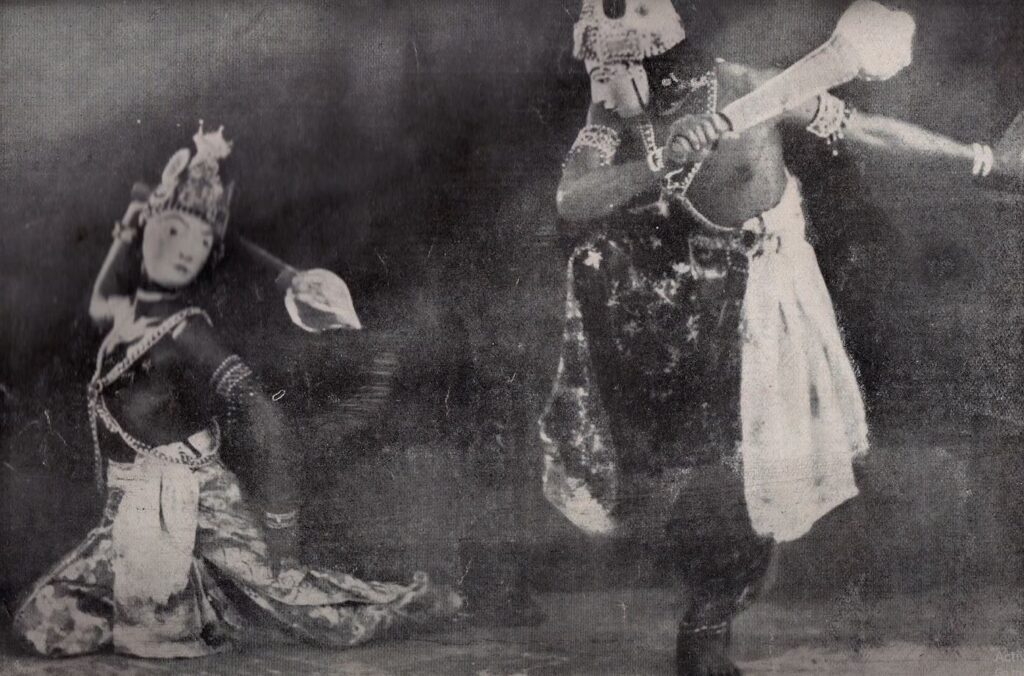

The prestige of Chhau dance grew under the leadership of Rajendra Patnaik and he spread it throughout Jharkhand. Its main artist was Shri Rajkumar Shubhendra Narayan Singh Deo, who was a skilled artist of dance.
Apart from this, Raja of Seraikela Shri Aditya Pratap Singh Dev and his son Tikayat Shri Nripendra Narayan Singh Dev also had great love for Chhau dance.
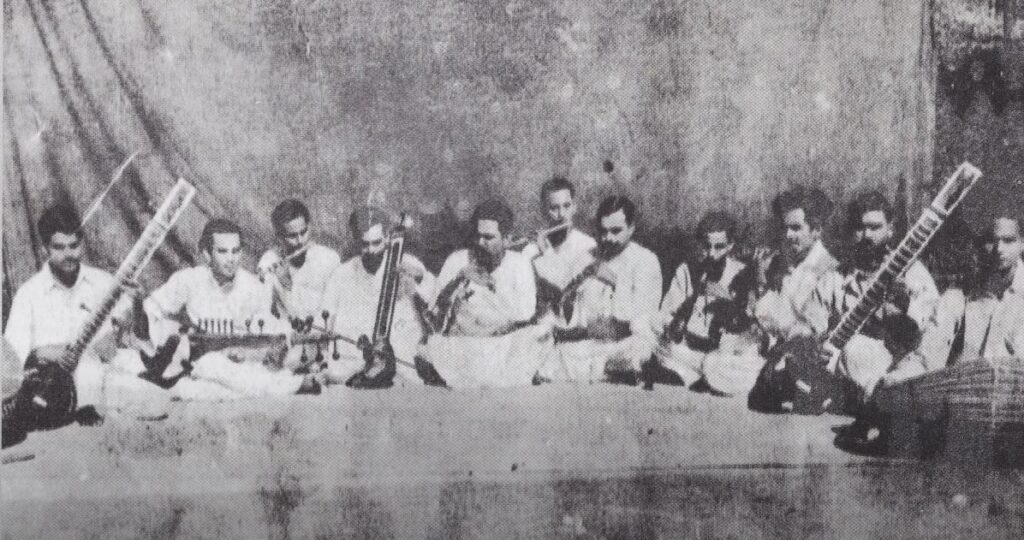

In this way it is clear that Chhau dance received state patronage and its annual events were organized regularly. As a result, this Hua dance was widely propagated and this art flourished in every village.
Some people interpret Seraikela Chhau Nritta to mean cantonment dance, because it originated in military camps. Some people say that ‘Chhau’ means ‘shadow’, because due to its behavior, a shadow of the characters appears on the stage, a picture of them is found and the dancer hides in this shadow. Whatever be the case, Khanda dance is the fundamental thing of this dance, which is called ‘Parikhanda’ dance here and Khanda skill is the main thing in it. As soon as the Maru is played, the warrior dancers move around in circles and fight.
Seraikela Chhau dance program
Seraikela Chhau dance is performed in many festivals and cultural programs of Jharkhand. Following are some of these major festivals and events:
- Seraikela Chhau Festival: It is an annual festival which is organized in Seraikela town. Various forms of Seraikela Chhau dance are performed in this festival.
- Tribal Festival: It is an annual festival which is organized in all the tribal districts of Jharkhand. Various tribal dances and music including Seraikela Chhau dance are performed in this festival.
- Indira Gandhi National Center for the Arts (IGNCA) Chhau Mahotsav: It is an annual festival which is organized at IGNCA, New Delhi. Various forms of Chhau dance from different parts of India are performed in this festival.
Seraikela Chhau dance is performed in many villages of Jharkhand. When Chaitra month comes, it is celebrated as Charak Puja. On this occasion, people wish for good yield of their crops, and are grateful for the good yield of crops by worshiping Shiva and Shakti.
Names of some villages where Chhau Festival is celebrated:
Krumbly , Rango , Assangi, Dugdha

